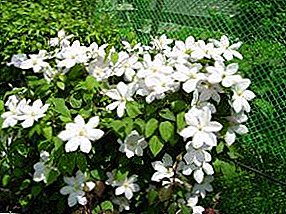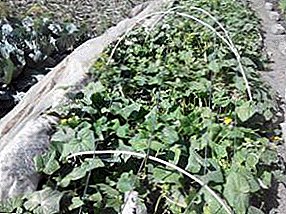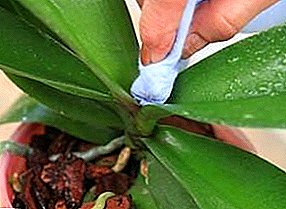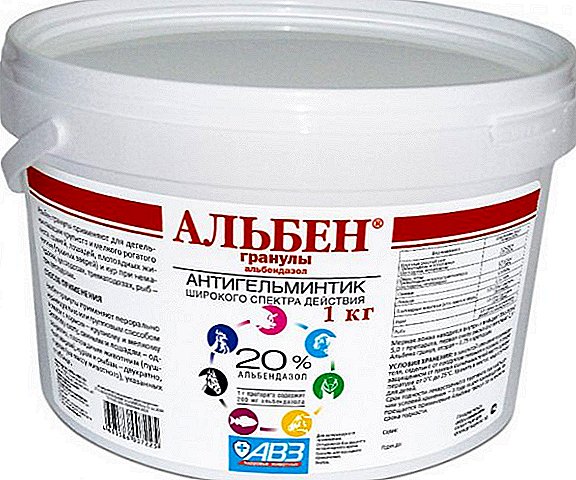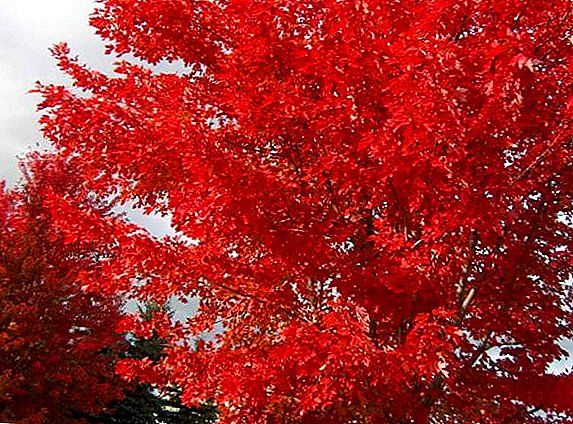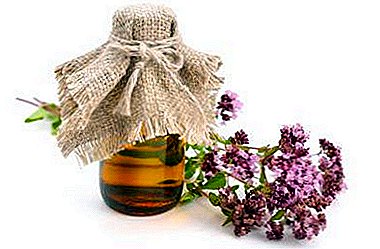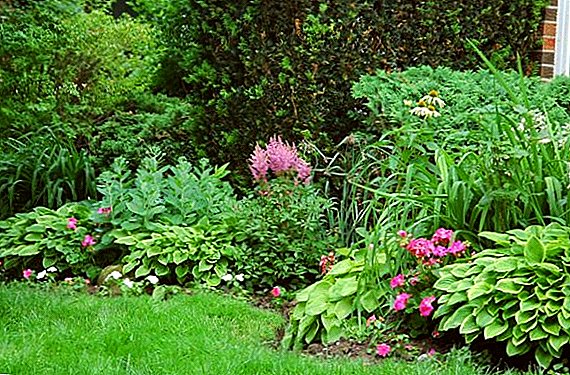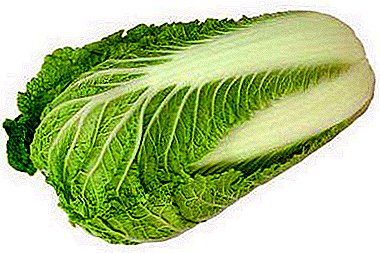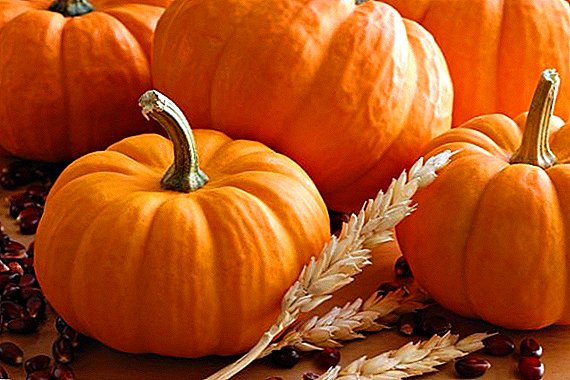 Habitual in the garden space and culinary use pumpkin well gives in to cultivation and care in different conditions, including an open ground.
Habitual in the garden space and culinary use pumpkin well gives in to cultivation and care in different conditions, including an open ground.
Pumpkin: garden crop description
The smooth, uneven or warty fruits of pumpkin, obtained as a result of natural farming, are very diverse in shape, color and weight. The latter ranges from tens of grams to centners. Growing pumpkins in open ground is facilitated by the peculiarities of its root system - the depth (up to 3 m) of the main root and the widely spread (up to 10 sq. M) active part, located in arable land 20-25 cm from the surface.
 This gives solid drought tolerance. Although varieties in the form of bushes have already become known in garden practice, the classic pumpkin stem creeps (crawls) along the ground, stretching to four or more meters. A huge leaf surface is made up of large pumpkin leaves with elongated petioles that do not have stipules. Each plant is a common home for male and female flowers.
This gives solid drought tolerance. Although varieties in the form of bushes have already become known in garden practice, the classic pumpkin stem creeps (crawls) along the ground, stretching to four or more meters. A huge leaf surface is made up of large pumpkin leaves with elongated petioles that do not have stipules. Each plant is a common home for male and female flowers.
The same-sex flowers of the same red-orange color differ:
- sequence of flowering (first appear male);
- place on the stem (female - above);
- pedicels (in males - longer);
- the presence of sometimes inflorescences (only for men).
In addition, female flowers that are not pollinated last longer. Pollination is carried out by insects (due to the natural gravity of the pollen, which is not able to transfer the wind) or manually by humans. The most favorable for natural pollination are the morning hours of the first days after watering or rain.
 The absence of bees due to cold, heat or prolonged precipitation leads to the fall of unpolished flowers. The ellipses of pumpkin seeds rounded and pointed from different ends are well known to numerous lovers to feast on them. Germination lasts up to four years.
The absence of bees due to cold, heat or prolonged precipitation leads to the fall of unpolished flowers. The ellipses of pumpkin seeds rounded and pointed from different ends are well known to numerous lovers to feast on them. Germination lasts up to four years.
In connection with the latter circumstance, it is possible to give an answer to the question of whether it is possible to sow pumpkin with fresh seeds: there must be more than the usual amount (after all, germination is slightly worse), and if we are talking only about a few seeds, it is recommended to cut them hand, as a strong fresh shell prevents the penetration of the germ.
Did you know? Of the eight hundred world-famous pumpkin varieties, only 200 are suitable for food.
Features of growing pumpkins, how to choose a plot for planting
In addition to the natural attention to the light and temperature conditions and the soil structure of the site where the pumpkin will grow, it is necessary to take into account the peculiarities of its root system, which actively removes nutrients from the ground, and wide foliage capable of stifling neighboring plantings.
Lighting Requirements
Ideally, a pumpkin needs lighting, as gardeners say, with full sun, that is, it should have at least six hours of direct sunlight per day. The result of this impact will be increased yields and improved fruit quality.
 But she will transfer the penumbra adequately. This is used to maximize the use of available land, compacting the seedlings of long-stalked varieties of corn by pumpkin plantings. The shade of the pumpkin itself makes it very difficult to develop weeds. In this sense, it can be used as a means to clean the soil.
But she will transfer the penumbra adequately. This is used to maximize the use of available land, compacting the seedlings of long-stalked varieties of corn by pumpkin plantings. The shade of the pumpkin itself makes it very difficult to develop weeds. In this sense, it can be used as a means to clean the soil.
Optimum temperature for seedlings or seeds
The general rule requires that the extreme limit of daytime air temperature when planting pumpkin seedlings were not lower than + 8 ° C (for seed planting - from + 13 ° С and higher) subject to its nightly decline not lower than + 3 ° С. In other cases, the risk is not worth it.
What should be the soil for planting
A pumpkin that grows well on any soil prefers a soil saturated with humus, moist but not too raw, with good drainage. To get this, before planting (sowing) the soil is mixed with a large amount of compost.
The soil for pumpkin can be either slightly acidic or slightly alkaline, but the acidity (pH) of 6.5 is considered optimal. It is not necessary to plant a pumpkin in the area where its relatives were growing (cucumbers, zucchini, squash).
 After other crops, the soil for pumpkin is suitable, and planting after potatoes, cabbage, tomatoes, onions, carrots, winter grains (corn and wheat), various legumes and herbaceous perennials is very favorable.
After other crops, the soil for pumpkin is suitable, and planting after potatoes, cabbage, tomatoes, onions, carrots, winter grains (corn and wheat), various legumes and herbaceous perennials is very favorable.
Important! Do not be afraid of groundwater close to the ground (0.6 - 0.7 m) - they will not affect the pumpkin yield.
Planting pumpkins in the garden (planting dates, sowing technology, pickling seedlings, preparing seeds, etc.)
How best to proceed, determining whether to plant pumpkin seeds or seedlings, the owner should tell the climate of the area in which it is located. That is, before sowing a pumpkin directly into the open ground or on seedlings, you need to devote some time to the study and assessment of natural factors. It depends on the geographical latitude in which month of the year gardeners will plant pumpkins. In particular, for the middle band this is the end of April.
Sowing seeds in open ground
 Directly in the open ground pumpkin seeds are planted in gardens where July air temperature is not below 18 degrees. Before that, you need to make sure, having studied the forecast of meteorologists, in the absence of the threat of quiet trouble, as sometimes called return frosts. After this danger has passed, produce seeding. If the weather deteriorates, it is better to cover the crops with non-woven textiles.
Directly in the open ground pumpkin seeds are planted in gardens where July air temperature is not below 18 degrees. Before that, you need to make sure, having studied the forecast of meteorologists, in the absence of the threat of quiet trouble, as sometimes called return frosts. After this danger has passed, produce seeding. If the weather deteriorates, it is better to cover the crops with non-woven textiles.
Important! The day before planting, the seeds are heated and soaked in water with dissolved ash.
Growing pumpkins in rassadny way
Once you have opted for the seedling method, you need to take care to properly germinate the pumpkin seeds in the seedlings. To the roots were intact when they are moved to open ground, planting pumpkin seeds for seedlings is done immediately in peat pots or just in paper cups.
When using sowing boxes at their bottom, under a substrate of a mixture of peat and soil, a layer of sawdust is poured into several centimeters. Sowing is carried out for three weeks before moving to open ground. In order for pumpkin seeds to grow well, the germination temperature in the first three days can be increased to 25 degrees, reducing it at night to a maximum of +15.
 Planting pumpkin seedlings involves a number of mandatory conditions. When the prepared soil is not yet warmed up, pumpkin seedlings should not be planted. It is possible to determine the optimum (12 degrees) soil temperature by simply inserting an ordinary household thermometer into it for 10 minutes. If it is lower, then make a cover for the soil from a polyethylene (preferably black) film. If time does not tolerate, or there is no other case for planting, then three (or more) liters of hot water can be pre-filled in the landing wells.
Planting pumpkin seedlings involves a number of mandatory conditions. When the prepared soil is not yet warmed up, pumpkin seedlings should not be planted. It is possible to determine the optimum (12 degrees) soil temperature by simply inserting an ordinary household thermometer into it for 10 minutes. If it is lower, then make a cover for the soil from a polyethylene (preferably black) film. If time does not tolerate, or there is no other case for planting, then three (or more) liters of hot water can be pre-filled in the landing wells.
Seedlings grown in peat pots are planted with them, burying 3 cm deeper than in the greenhouse soil. Seedlings of the boxes are placed in the wells, filled with water, so that, settling in the soil, the roots avoid unnecessary bends.
How to care for a pumpkin
Care for pumpkin begins with its watering immediately after planting. Approximately a week after this, it is advisable to mulch the soil surface with compost containing effective microorganisms by placing crushed nettle on top of its layer. Peat, humus, pine needles and even dry soil are also suitable as mulch.
 The essential moment of care is the maintenance loosening of the soil, which must be done at least every two weeks. This procedure is almost always combined with weeding. Immediately after the landing, the loosening depth can be up to 12 cm, and by the end of the first month it should be reduced to 5-8 cm to avoid damage to the root system. In the absence of natural (insect) pollination, it is necessary to use the manual method - otherwise the unbound fruits rot.
The essential moment of care is the maintenance loosening of the soil, which must be done at least every two weeks. This procedure is almost always combined with weeding. Immediately after the landing, the loosening depth can be up to 12 cm, and by the end of the first month it should be reduced to 5-8 cm to avoid damage to the root system. In the absence of natural (insect) pollination, it is necessary to use the manual method - otherwise the unbound fruits rot.
The operation, which should be carried out before noon, is quite simple: with anthers of each plucked male flower with removed petals, you must carefully touch the pistils of one or two female flowers. When the weather improves, in order to attract insects as pollinators, you can spray a blooming pumpkin with honey water weekly (one teaspoon of sweetness per 10 liters of water).
Important! In order not to rot the fruit - conduct yourself pollination.
How to form a plant
Pumpkin seedlings quickly become sprawling plants with long stems and large leaves. To a powerful plant does not violate the boundaries of the territory of its growth, it is required to produce a pumpkin, which is easy to do in the open field. The technology of pinching a pumpkin is used for this, and it should be done while the plant is young. Pinching occurs by removing the apical bud (possible with part of the shoot).
 Her goal - the accelerated development of lateral shoots, bearing a greater number of female flowers. In addition, extra young axillary shoots that have reached 5-7 cm are removed - this procedure is called staving. It is carried out on open ground simultaneously with the removal of excess leaves and the direction of all processed pumpkin whips in one direction. Leaving at the same time on each lash in one ovary, at the harvest stage they get excellent sizes of fruits.
Her goal - the accelerated development of lateral shoots, bearing a greater number of female flowers. In addition, extra young axillary shoots that have reached 5-7 cm are removed - this procedure is called staving. It is carried out on open ground simultaneously with the removal of excess leaves and the direction of all processed pumpkin whips in one direction. Leaving at the same time on each lash in one ovary, at the harvest stage they get excellent sizes of fruits.
Watering and fertilizing pumpkin
Irrigation period for pumpkin is the time of its flowering, the emergence and development of ovaries. At the beginning of the fruit set, the plant is watered moderately so that they do not grow too small. Then the volume of moisture, and warm (at least +20 degrees), increase.
Warm significant watering contributes to the formation of female flowers. Cold watering well or artesian water is able to destroy the landing. When real foliage appears in a growing pumpkin, it begins to be fed with dry nitrophoska (10 g per plant) and 15 grams of nitrophosphate diluted with water are given to each vegetable when lashes are formed.
For two meals (per month) feeding is also recommended to use:
- - ash at the rate of 1 cup / 1 plant;
- - a solution (1: 8) of mullein in the calculation of 10 liters for six plants, when the growing season began, and for three - during fruiting;
- - humus, rotted chicken droppings or dung, humus - can be by eye.
How to protect the pumpkin from pests and diseases
| Pests and diseases | Manifestations | Ways to protect |
| Gourd Aphid | Leaf curl, flowers fall | Spraying infusion of celandine (or garlic, or onion peel) or chemical solution (kemifos, actellic, fufanon). Autumn harvesting and liquidation of plant residues, deep digging of soil |
| Slugs | Damage to young leaves (round holes and silvery stripes), later - ovaries | Soil loosening, thinning, weeding. Traps of cabbage leaves, watermelon peels, wetted rags, followed by the destruction of pests in concentrated salt solution. Superphosphate and other chemical protective strips around plants. Spraying solution of creacid |
| Mealy dew | Drying of diseased leaves covered with abundant white bloom extending to the stems and petioles | Timely weeding. Warm watering. Removal of diseased leaves. Spraying with chemicals (strobi, topaz) and their treatment of the soil three weeks before harvest |
| Perinosporosis (downy mildew) | Growing and drying light yellow spots and gray-purple leaves on the leaves | Warming up of seeds before sowing. Chemical spraying (strobe, cartocide, copper oxychloride, cuproxate) |
| Anthracnose | Drying and forming holes on the leaves, depressed spots with a pink bloom. Appear also on cotyledons and petioles | Removal of diseased plants. Spraying (Bordeaux liquid, copper oxychloride, abigalic) |
Pumpkin: when and how to harvest
Regardless of the variety pumpkin must be completely removed before the onset of autumn frosts.
The ripeness of the pumpkin and its readiness for harvesting is determined by:
- maximum dryness, hardness and stiffness of the stem;
- dry, yellow and pale leaves;
- hard surface of the fruit and the brightness of its color.
 When the optimal time comes to pick up different varieties of pumpkin, tell the instructions or tips gardeners. For the early maturity (Winter Sweet, Blue Hubbard, Volga Gray, Healing, Russian) this is usually the end of August. They have a small shelf life (up to a month), so the crop immediately goes for processing.
When the optimal time comes to pick up different varieties of pumpkin, tell the instructions or tips gardeners. For the early maturity (Winter Sweet, Blue Hubbard, Volga Gray, Healing, Russian) this is usually the end of August. They have a small shelf life (up to a month), so the crop immediately goes for processing.
September cleaning is designed for mid-season varieties. Some fruits of late varieties (Pearl, Testi Delaip, Vitamin, Butternat) are sometimes removed even unripe - they then (after about a month) get the necessary ripeness in a cool dark place. The general requirement for harvested fruits is their lack of damage, which leads to deterioration and inability to use. In this regard, the pumpkin must be cut very carefully, leaving about a 4-centimeter-long stem.
Did you know? Every year in the fall, a festival is held in Germany with an exhibition of pumpkin sculptures.
The usefulness of pumpkin, especially for children, more than covers all the efforts to cultivate it. And the gardening troubles themselves will end in the case of a pumpkin, all paying back a bright and rich harvest.


